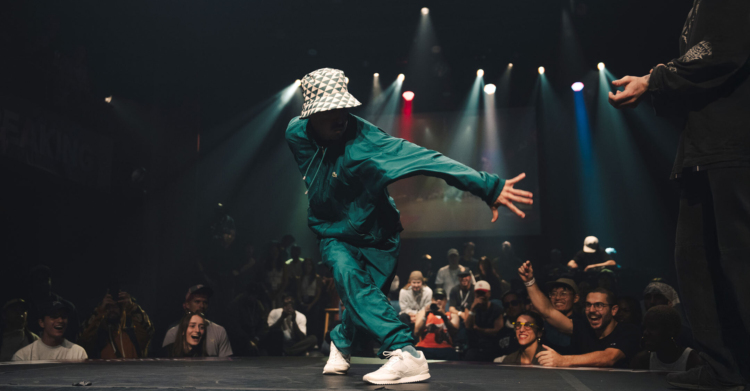
Tuesday, December 3, 2024 - Danse Danse blog.
Cultural philanthropy
Philanthropy is a story of heart and commitment. It's about hope and generosity. But what does it actually mean? Philanthropy is a sometimes misunderstood field: often seen as the preserve of the few, it is in fact accessible to all, and can take many forms. To better understand it, we met Wendy Reid, Honorary Professor of Management at HEC Montréal and philanthropy researcher. In this interview, she sheds light on the many facets of generosity and demystifies the art of giving.
DD: What led you to become involved in cultural philanthropy?
WR: I had no orientation towards philanthropy until I was in my early thirties. Giving was not part of my family's culture. We lived in Toronto; my father was a doctor, but he had a very poor childhood. For him, the idea of giving money was not part of his culture. I started attending the arts when I was very young, at the age of 5. In the 80s, when I was working at the National Ballet of Canada (NBC), there wasn't much of a philanthropic culture. And I had American colleagues at the Canadian Opera Company who wanted to build an opera house in Toronto. They wanted to work with the NBC, because traditionally an opera house involves a partnership between the opera and the ballet. And at that point, they wanted the NBC to become better and better at philanthropy, to make the partnership effective. The NBC Board asked me if I could take over fundraising. I learned from my colleagues at the Canadian Opera Company who, being Americans, trained in philanthropy at universities in the United States. They shared their approach with me, and I began working in cultural philanthropy. That's when I started giving.
DD: How would you explain cultural philanthropy in simple terms?
WR: Philanthropy means involvement in the community through generosity. Philanthropy is a motivation to have an impact on the quality of life.
Cultural philanthropy is proximity philanthropy, which comes from people who are very close to the organization, people who are passionate about it, people you can talk to in the theatres. This type of donor and motivation is unique in contrast to other sectors such as poverty, for example.
Poverty was part of the Church's tradition of charity. Any church has a sense of responsibility to charity. Charity is often defined by poverty, health, and I would also say education. It's a long tradition, and since then, we've been multiplying and adding to the charitable sector. We've added other causes that touch everyone, like the environment and international aid. And then arts and culture were added in affiliation with education (according to the Canada Revenue Agency).
Proximity philanthropy, as in the arts, has fewer donors than a cause like poverty, but people are highly motivated because there's a passion and knowledge of art behind their gesture. The arts are no more difficult than other philanthropic causes, they're just special.
"By making a commitment, donors validate the organization's legitimacy and reinforce its impact."
DD: Why do you think it's important to support culture through donations?
WR: First of all, there are foundations that give. Even though they're often supported by the government, behind them there are still people who want to get involved in the community and who want that money to have an impact in society. Foundations are important for creating additional resources.
Then there's individual giving, which can take many forms - annual giving, monthly giving, membership giving, bequests and so on. These donations go beyond a simple financial contribution. These donors are often part of the organization's audience, but make a greater commitment than others who simply attend the culture. By supporting culture through giving, they create a community around the organization, sharing the same values and becoming actively involved.
Supporting culture through giving also reinforces loyalty and commitment. It's about cultivating a sense of passion for the organization. And it's not just about money: there's real feedback, mutual recognition. By committing themselves, donors validate the organization's legitimacy and reinforce its impact.
DD: Who can be a philanthropist?
WR: Anyone, anywhere in society, for any cause. Some people give $5 a month, others $50, and they're all donors. It's not a question of being rich, it's a question of motivation. A philanthropist is someone who is motivated to get involved in the community.
DD: What misconceptions do people have about philanthropy?
WR: A lot of people think that philanthropy is only for big donors - people who are fairly well off. But that's not the case at all. Yes, you have to have the resources to make large donations. But small donations are also what create community. If we change this perception, it will open the door to philanthropy to everyone.
DD: What do you think a donor gains, on a human level, by supporting culture?
WR: Well-being! It's as simple as that.
Well-being, because when you give, you feel you've done some good. Research shows that brain chemistry changes when you make a donation. Being involved in the arts as a philanthropist creates happiness because you feel part of something you enjoy. When I see my name on a list of donors to a cultural organization, I feel that this cause belongs to me a little and I feel good, because it shows my involvement. There's a recognition and a return in all that.

2025 Montreal Dance Awards


